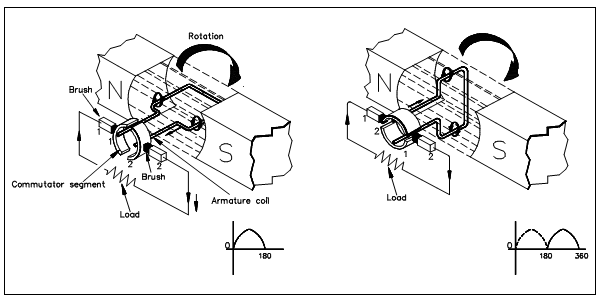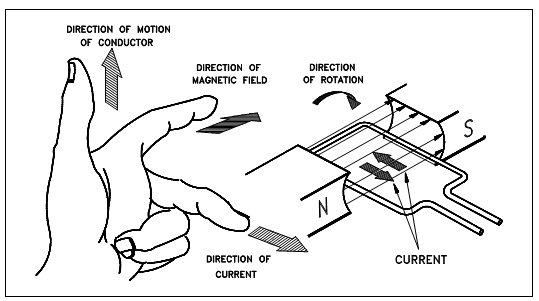Theory of Operation
A basic DC generator has four basic categories:
(1) a magnetic field;
(2) a single conductor, or loop;
(3) a commutator;
(4) brushes.
The magnetic field might be supplied through either a permanent magnet or an electromagnet. For currently, we will use a permanent magnet to define a basic DC generator.

A single conductor, shaped in the form of a loop, is positioned among the magnetic poles. As long as the loop is stationary, the magnetic field has no effect (no associative motion). The loop cuts through the magnetic field if we rotate the loop, and an EMF (voltage) is induced within the loop.
While we have relative motion among a magnetic field and a conductor in which magnetic field and the direction of rotation is like which the conductor cuts the lines of flux, an EMF is induced into the conductor. A magnitude of the induced EMF depends on the field strength and the rate at that the flux lines are cut, as shown in equation (5-1). The stronger the field or the more flux lines cut for a provided period of time, the huger the induced EMF.
Eg = KΦ N (5-1)
where
Eg = generated voltage
K = fixed constant
Φ = magnetic flux strength
N = speed in RPM
The direction of the induced current flow could be determined by using the "left-hand rule" for generators. This rule states in which if you point the index finger of your left hand in the direction of the magnetic field (from North to South) and point the thumb in the direction of motion of the conductor, a middle finger will point in the direction of current flow that was show in the figure. Within the generator display in Figure 4, for instance, the conductor closest to the N pole is traveling upward across the field; thus, the current flow is to the right, lower corner. The left-hand rule applying to both sides of the loop will show in which current flows in a counter-clockwise direction in the loop.
